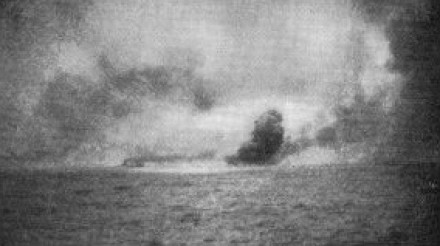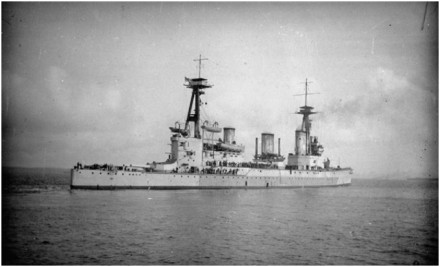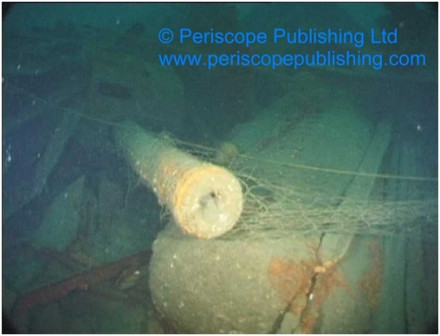History
HMS Indefatigable was commissioned in 1911 as an enlarged version of the earlier Invincible-class (see: HMS Invincible). She was first deployed in the Mediterranean, where she successfully carried out bombardments on several Ottoman fortifications during the Allied Dardanelles campaign in World War I.
After joining the Grand Fleet in the North Sea, the Indefatigable was active in the Battle of Jutland from May 31 to June 1, 1916, where she was the first of three battlecruisers ultimately sunk. Around 16:00 in the afternoon on May 31, the Indefatigable was struck by two or three German shells. Minutes later, more hits followed the first initial strike, causing the magazines in both the forecastle and the forward turret to explode. Indefatigable began to sink by the stern, listing to port. The most likely cause of her sinking was an explosion that blew out her bottom as well as severed her steering control shaft. Not long after taking her first hit, Indefatigable sank, taking with her almost her whole crew of 1019, of which only two managed to survive to be rescued by a German torpedo boat.

Description
The HMS Indefatigable was a British Royal Navy Indefatigable-class battlecruiser. It was launched 28 October 1909. The vessel’s propulsion consisted of two steam turbines and 31 coal-fired boilers. Its armament was made up of: 4 x 2 - BL 12-inch; Mk X guns; 16 x 1 - BL 4-inch; Mk VII guns; 2 x 1 submerged 17.72-inch torpedo tubes. The Indefatigable’s armour was 1.5-10 inches.

| People on board | 800 |
|---|---|
| Speed | 25 knots ~ 29 mph (46 km/h) |
| Length | 590 feet (179.8 m) |
| Draft | 29 ¾ feet (9.1 m) |
| Beam | 80 feet (24.4 m) |
Status
Despite heavy commercial salvaging by German firms in the 1950s, nautical archaeologist Innes McCartney was able to locate the wreck of the HMS Indefatigable in 2001. The salvage operations had nevertheless left the ship in tiny pieces. The wreck site has since been declared protected, along with other Jutland wrecks, under the Protection of Military Remains Act 1986. Despite this, when the wreck was discovered, it was clear that it had been heavily salvaged in the past.

Underwater video of the wreck site (source: CustomDivers.com).